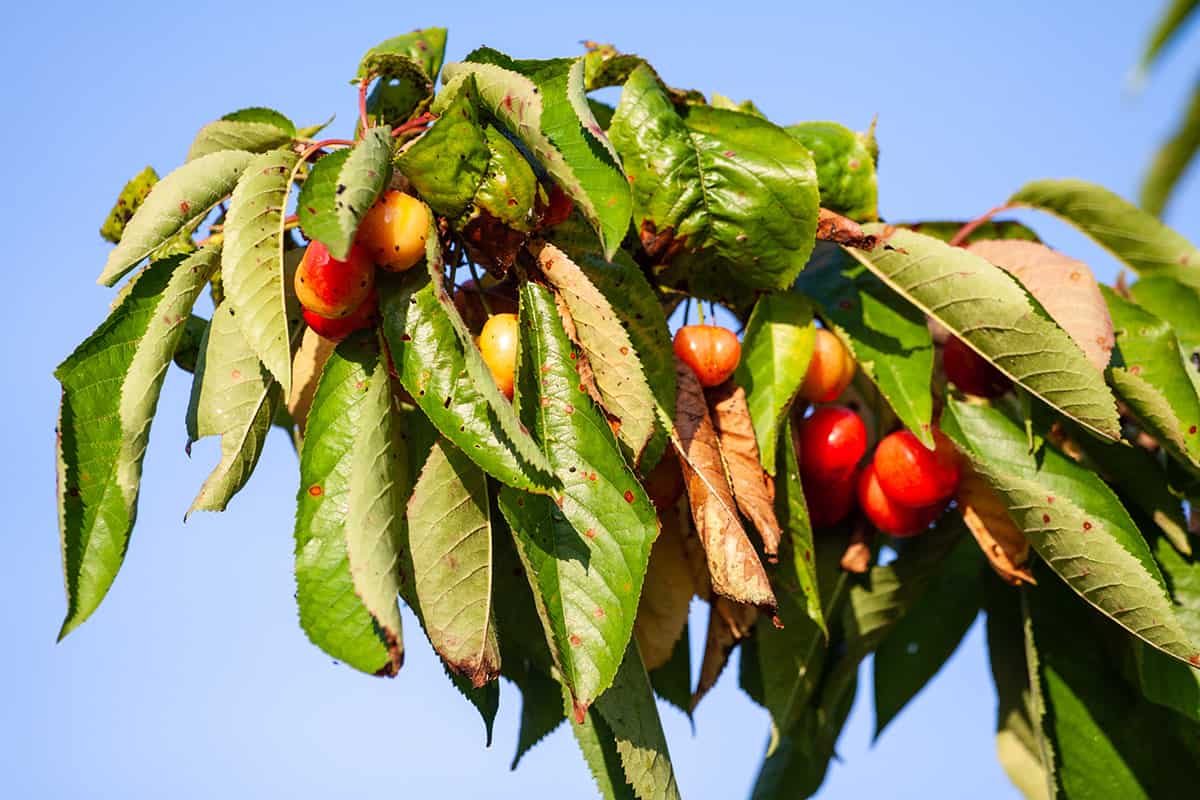Cherry trees can fall victim to several diseases that negatively impact their health appearance and productivity. Being able to accurately identify these diseases is crucial for taking proper care of your cherry trees. Pictures provide a useful visual reference for recognizing and diagnosing common cherry tree diseases. In this article, we’ll explore some key diseases affecting cherry trees, using pictures to spotlight the symptoms.
Common Diseases That Damage Cherry Trees
Cherry trees are susceptible to various fungal bacterial, and viral diseases. Some of the most prevalent include
- Black knot
- Powdery mildew
- Brown rot
- Bacterial canker
- Cherry leaf spot
- Phytophthora root rot
These diseases can damage leaves, branches, trunks, roots, and fruits. If left unchecked, they can severely weaken and potentially kill cherry trees. Understanding what to look for is vital for early intervention.
Recognizing Cherry Tree Diseases Through Photographs
Pictures are very helpful for figuring out what diseases someone has based on their symptoms. To help you figure out what these common cherry tree diseases look like, here are pictures of them:
Black Knot
Black knot manifests as rough, elongated black swellings on branches. These knots enlarge progressively, sometimes girdling and killing branches.
Black knot disease on a cherry tree branch
Black knot disease on a cherry branch
Powdery Mildew
Powdery mildew gets on leaves, stems, and fruits and looks like a white or gray powdery covering. Leaves may become distorted and drop prematurely.
Cherry leaves covered in white powdery mildew
Powdery mildew infection on cherry leaves
Brown Rot
Fruits that are infected with brown rot rot and turn brown or grayish brown. Advanced infections may show fungal spore growth.
Cherry fruit with brown rot infection
Cherry fruit exhibiting brown rot symptoms
Bacterial Canker
Bacterial canker leads to oozing cankers on branches and trunks. Cankers appear sunken or cracked with reddish exudate.
Cherry tree canker oozing reddish sap
Weeping cherry tree canker due to bacterial infection
Cherry Leaf Spot
Cherry leaf spot manifests as small purple or brown spots scattered across leaf surfaces. Spots may fall out leaving a shot hole pattern.
Cherry tree leaf with purple leaf spot lesions
Cherry leaf exhibiting small purple leaf spot lesions
Causes of Cherry Tree Diseases
Fungal Pathogens
Fungi such as Apiosporina morbosa (black knot), Podosphaera clandestina (powdery mildew), and Monilinia species (blossom blight, brown rot) are behind many cherry tree diseases. They thrive in wet conditions.
Bacterial Infections
Bacteria including Pseudomonas syringae (bacterial canker) invade trees through wounds, spreading fastest in cool, wet weather.
Viral Pathogens
Viruses like Little Cherry Virus-2 infect trees via insect vectors and propagation, resulting in poor fruit quality and reduced vigor.
Preventing and Managing Cherry Tree Diseases
Cultural Practices
- Choose disease-resistant varieties
- Prune for open canopy
- Disinfect pruning tools
- Promote airflow
- Water at soil level
- Clean up fallen leaves/fruit
- Use preventive fungicides
Remedial Measures
- Prune out infected parts
- Apply fungicides to protect healthy tissue
- Remove severely infected trees
Familiarizing yourself with the appearance of common cherry tree diseases can make identification easier. Use pictures as a visual guide for spotting issues early. Preventive care, prompt treatment, and working with experts when needed gives cherry trees the best chance of overcoming diseases. With knowledge and vigilance, you can maintain the health of your cherry orchard.

FAQ About Common Cherry Tree Diseases
Cherry tree leaves usually turn brown from improper watering, weather stress, or cherry diseases such as cherry leaf spot or brown rot.
What Cherry Trees Are Black Knot-Resistant?
East Asian cherry, North Japanese hill cherry, and Prunus maackii (Manchurian cherry or Amur chokecherry) are all types of cherry trees that are resistant to black knots.
Cherry Tree Diseases | Cherry tree fungus
FAQ
How do you identify a cherry tree disease?
Cherry Tree Disease Signs and Symptoms: Changing leaf color, like turning yellow, brown, or red, is often a sign of a disease. Wilting leaves, especially during adequate soil moisture, can signal root-related issues like Phytophthora Root Rot.
What does a fungus on a cherry tree look like?
What Are The Symptoms Of Cherry Tree Fungus? It can vary based on the fungus. Black swellings or knots, silver leaves, light powdery patches, depressed cankers, and leaves falling off are all signs of a problem.
How to fix a diseased cherry tree?
In late winter or early spring, diseased leaves must be removed from the ground around the tree to get rid of the source of overwintering inoculum. However, when disease is severe, a season-long fungicide spray program is also necessary for effective control.
How to tell if a cherry tree is dying?
A quick way to check is by scratching the bark with a fingernail or a knife to expose the cambium; a bright green color shows that part of the plant is alive, but a brown or dull green cambium color indicates that it is probably dead.
